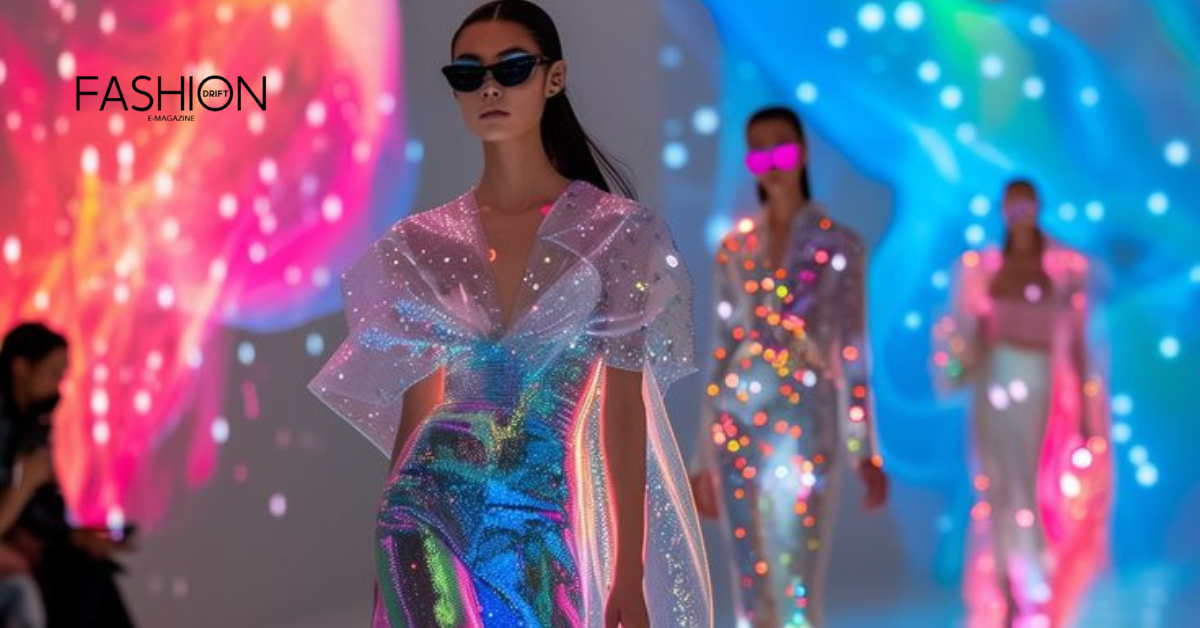Introduction
A fashion show is more than just a display of clothes; it is a vibrant celebration of creativity, style, and innovation. From the bustling runways of New York to the sophisticated catwalks of Paris, fashion shows serve as the ultimate platform for designers to showcase their latest collections to the world.
In this article, we’ll explore the history, significance, and elements of fashion shows. We’ll also highlight some of the most iconic fashion shows and their impact on global fashion trends.
What is a Fashion Show?
A fashion show is a live event where designers present their latest collections to an audience of fashion enthusiasts, buyers, media, and celebrities. Models walk down a runway wearing the designs, allowing attendees to view the garments up close and in motion.
Key Elements of a Fashion Show:
- Runway: The central platform where models showcase the designs.
- Models: Individuals selected to wear and present the designer’s creations.
- Creative Themes: Each show often follows a unique theme that reflects the designer’s vision.
- Music and Lighting: Essential for creating the ambiance and enhancing the presentation.
The History of Fashion Shows
The concept of fashion shows can be traced back to the 19th century. Charles Frederick Worth, often regarded as the father of haute couture, organized the first fashion show in Paris in the mid-1800s. Instead of presenting garments on mannequins, Worth used live models, revolutionizing the way fashion was showcased.
Significant Milestones:
- Mid-19th Century: Charles Worth’s first fashion show in Paris.
- 1903: The first American fashion show was held in New York City.
- 1943: The launch of New York Fashion Week, the first organized fashion week.
- Present Day: Fashion weeks are held globally in cities like Paris, Milan, London, and Tokyo.
Why Are Fashion Shows Important?
Fashion shows play a crucial role in the fashion industry. They are not just about showcasing clothes but are also a means of storytelling and brand positioning.
Significance of Fashion Shows:
- Trendsetting: Fashion shows set the tone for upcoming trends, influencing designers and retailers worldwide.
- Brand Promotion: Designers use fashion shows to promote their brand identity and collections.
- Artistic Expression: Fashion shows allow designers to express their creativity and vision.
- Networking Opportunities: Industry professionals, buyers, and influencers attend these events, fostering business relationships.
Types of Fashion Shows
There are several types of fashion shows, each serving a unique purpose within the fashion industry.
1. Haute Couture Shows
These shows feature high-end, custom-made garments created for exclusive clients. Haute couture shows are known for their elaborate designs and craftsmanship.
2. Ready-to-Wear (Prêt-à-Porter) Shows
Ready-to-wear shows showcase collections that are produced in standard sizes and sold in stores. These shows target a broader audience compared to haute couture.
3. Seasonal Fashion Weeks
Seasonal fashion weeks, such as Spring/Summer and Autumn/Winter, are organized to present upcoming collections. Major fashion weeks include:
- Paris Fashion Week
- New York Fashion Week
- Milan Fashion Week
- London Fashion Week
4. Trade Shows
Fashion trade shows are events where designers and brands present their collections to buyers and retailers. These shows focus on business and wholesale transactions.
5. Charity Fashion Shows
Organized to raise funds for charitable causes, these shows often feature celebrity models and unique collections.
Iconic Fashion Shows and Moments
Certain fashion shows have made history with their creativity and impact on the industry.
1. Chanel’s Supermarket Show (2014)
Karl Lagerfeld transformed the Grand Palais in Paris into a luxury supermarket, with models walking through aisles filled with Chanel-branded goods.
2. Alexander McQueen’s “Plato’s Atlantis” (2010)
This futuristic show featured innovative designs inspired by marine life. It is considered one of McQueen’s most iconic collections.
3. Victoria’s Secret Fashion Show
Known for its elaborate lingerie designs and performances by top musical artists, this annual event became a global spectacle before it ended in 2019.
4. Versace’s Jungle Dress (2000)
Jennifer Lopez’s green Versace dress at the Grammy Awards became so iconic that it inspired the creation of Google Images.
How Fashion Shows Influence Trends
Fashion shows are a major driving force behind global fashion trends. Designers often experiment with new styles, fabrics, and concepts, which trickle down to mainstream fashion over time.
Trendsetting Process:
- Runway Debut: New collections are showcased at fashion weeks.
- Media Coverage: Fashion journalists and bloggers highlight key trends.
- Retail Adaptation: Retailers incorporate trends into their collections.
- Consumer Adoption: Trends become popular among the general public.
The Future of Fashion Shows
The fashion industry is evolving, and fashion shows are adapting to new technologies and consumer demands.
Trends Shaping the Future:
- Virtual Fashion Shows: The COVID-19 pandemic accelerated the shift to digital events, with designers hosting virtual shows.
- Sustainability: Eco-friendly and sustainable fashion is becoming a priority.
- Inclusivity: Shows are embracing diversity in terms of models and design concepts.
- Technology Integration: Augmented reality (AR) and virtual reality (VR) are enhancing the fashion show experience.
How to Organize a Fashion Show
If you’re interested in organizing a fashion show, here are some key steps to consider:
- Define the Concept: Choose a theme or concept that aligns with your brand.
- Select a Venue: Find a location that complements your show’s aesthetic.
- Hire Models: Choose models who can effectively showcase your designs.
- Plan Logistics: Coordinate lighting, music, and stage design.
- Promote the Event: Use social media and PR to generate buzz.
- Execute the Show: Ensure smooth execution with a well-planned schedule.
Conclusion
A fashion show is a dazzling event that brings together creativity, artistry, and innovation. From haute couture to ready-to-wear collections, fashion shows offer a glimpse into the latest trends and designs from the world’s top designers. Whether you’re a fashion enthusiast or an aspiring designer, understanding the significance of fashion shows provides valuable insights into the industry’s dynamics.
As the fashion world continues to evolve, fashion shows will remain a vital platform for creativity and expression, influencing trends and inspiring generations of designers and consumers alike.

